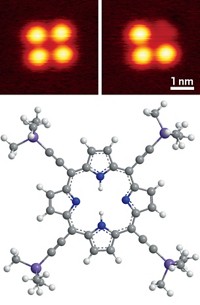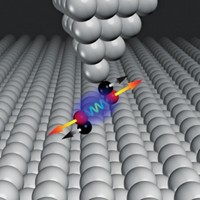Advertisement
Grab your lab coat. Let's get started
Welcome!
Welcome!
Create an account below to get 6 C&EN articles per month, receive newsletters and more - all free.
It seems this is your first time logging in online. Please enter the following information to continue.
As an ACS member you automatically get access to this site. All we need is few more details to create your reading experience.
Not you? Sign in with a different account.
Not you? Sign in with a different account.
ERROR 1
ERROR 1
ERROR 2
ERROR 2
ERROR 2
ERROR 2
ERROR 2
Password and Confirm password must match.
If you have an ACS member number, please enter it here so we can link this account to your membership. (optional)
ERROR 2
ACS values your privacy. By submitting your information, you are gaining access to C&EN and subscribing to our weekly newsletter. We use the information you provide to make your reading experience better, and we will never sell your data to third party members.
Synthesis
Laser breaks H-Si bonds selectively
May 22, 2006
| A version of this story appeared in
Volume 84, Issue 21
The ability to control the breaking of chemical bonds by using lasers to selectively excite the bonds' vibrational frequencies has been a long-standing but as-yet-unrealized goal. In most experiments, the initial vibrational excitation quickly distributes throughout molecules as thermal energy. Now, using a free-electron laser, Philip I. Cohen of the University of Minnesota and colleagues have selectively broken H-Si bonds on a silicon surface. In addition to being a scientific milestone, the work could also find utility in semiconductor research, such as nanostructure fabrication. The group bombarded a silicon surface covered with 15% H and 85% D atoms with a laser tuned to the same energy as the vibrational mode of the H−Si bond. H2 was the primary molecule released, ruling out a thermal process, which would have generated large quantities of D2 (Science 2006, 312, 1024). The mechanism remains unresolved, but the authors hypothesize that the bonds absorb multiple photons before breaking.





Join the conversation
Contact the reporter
Submit a Letter to the Editor for publication
Engage with us on Twitter